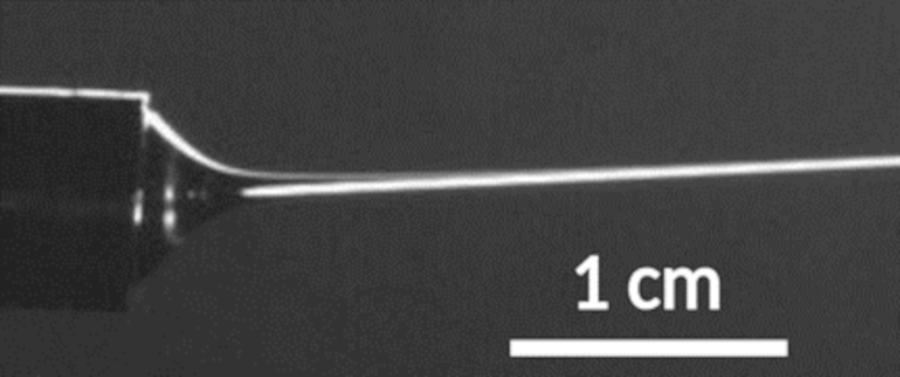Magnetic nanofibers for new MEMS applications
A research team carried out the analysis of iron nanofibers and revealed its special magnetic properties. This work, published in Nanotechnology, paves the way for new developments in MEMS.
MEMS, the invisible technologies in our daily lives
What do smartphones, airbags, and insulin pumps have in common? Microelectromechanical systems (MEMS). Invisible to the naked eye, this technology is present in many other everyday applications. MEMS have two functions: sensor and actuator. For example, in the case of an airbag, when changing acceleration, the system sends an electrical message to activate certain commands.
In recent years, new developments have integrated magnetic components into these technologies. One potential application is to be able to remotely activate and control microstructures with a high degree of precision. For example to deliver medicines very precisely in the body. To this end, the materials used contain microscopic magnetic compounds, known as magnetic nanofibers. However, obtaining microscopic materials with high, uniformly distributed magnetization, remains a technological challenge.
In this context a research team developed new iron-based nanofibers. This work is the result of a collaboration between the Laboratory of Multimaterials and Interfaces (LMI - Claude Bernard Lyon 1 University / CNRS), the Lyon Nanotechnology Institute (INL - INSA Lyon / Claude Bernard Lyon 1 University / CNRS / INSA Lyon / EC Lyon / CPE Lyon), the Institute of Light and Matter (ILM - Claude Bernard Lyon 1 University / CNRS), and the Laboratory of Materials: Engineering and Science (MATEIS - INSA Lyon / Claude Bernard Lyon 1 University / CNRS).
A complete study of iron nanofibers
To obtain these nanofibers, scientists use electrospinning. By applying an electric field to a polymer solution, one can stretch it under the effect of electrostatic forces. This technique produces extremely fine, solid filaments (on the order of one millionth of a millimetre) within a polymer matrix. By incorporating metal ions into the polymer solution, and applying a suitable heat treatment, they acquire magnetic properties. Under the effect of a magnetic field, these filaments are then self-organized in the polymer matrix during its cross-linking, a process that transforms the liquid polymer into a solid.

Electrospun filament from a polymer solution - LMI Credits
So far, little work has explored the magnetic properties of purely iron-based nanofilaments. The research team has filled the gap. Researchers carried out the analysis and characterization of this nanoscale structure, as well as its magnetic properties.
The results of this study reveal in particular that this microstructure induces a uniaxial magnetic anisotropy of the composite. The magnetic susceptibility, and therefore the magnetization of the fibers at low field strength, is greater in the direction of orientation of the nanofibers.
Magnetic anisotropy implies that the response of the material to an external magnetic field depends on its direction. In a way, iron nanofibers self-organize within the polymer along the field lines, like iron filings near a magnet. This resulting uniaxial anisotropy increases the magnetic response of the material.
Thus, these results open new perspectives in the development of magnetic composite materials.
Article référence :
Ourry, L., Damien, L. E., Mekkaoui, S., Douillard, T., Deman, A. L., & Salles, V. (2020). Magnetic filaments for anisotropic composite polymers. Nanotechnology.
Published on July 1, 2020



 en
en fr
fr
 es
es

